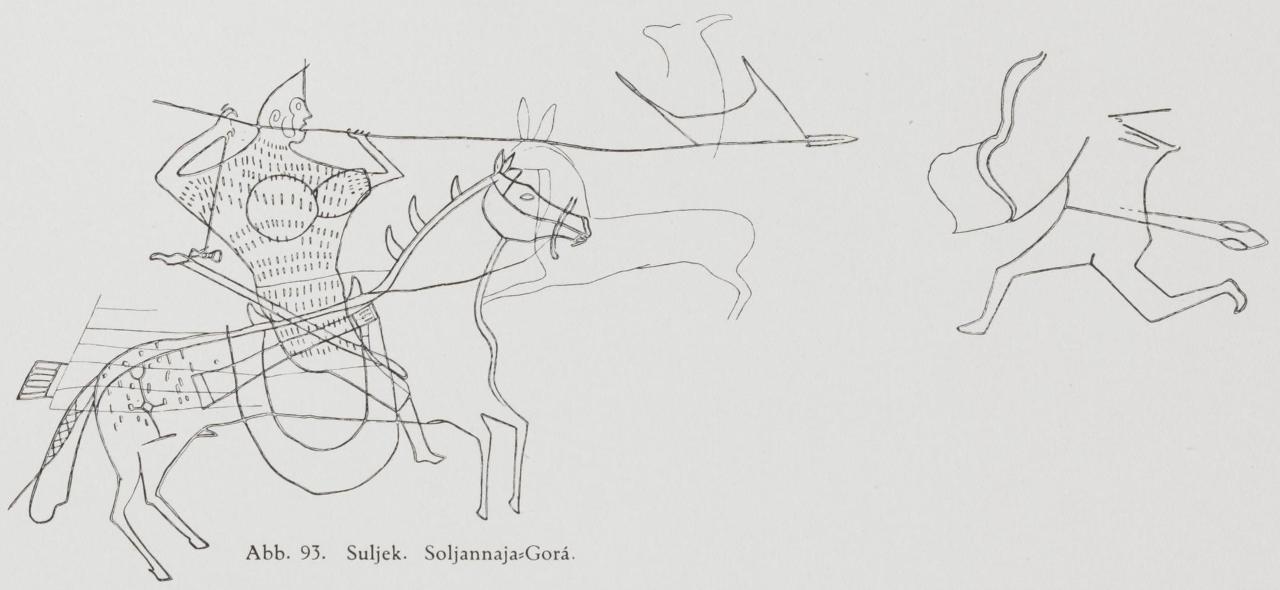
Create an Amazon Wedding Registry
Avar? or Kirghiz? Rock Carving on Soljannaja-Gorá Hill, near the Village of Suljek, Siberia

Source: Fig. 93, p.17, Appelgren-Kivalo, Hjalmar, “Alt-Altaische Kunstdenkmäler Briefe und Bildermaterial von J. R. Aspelins Reisen in Sibirien und der Mongolei 1887-1889.” NII “Digital Silk Road” / Toyo Bunko.
| Auf einer anderen Felswand desselben Berges befinden sich zumeist eingeritzte Bilder, Abb. 92. Von diesen ist die bemerkenswerteste Gruppe, die auch Aspelin erwähnt, in Abb. 93 besonders wiedergegeben. Hier ist die Ausrüstung eines Mannes ungewöhnlich vollständig abgebildet : Helm, Panzerhemd, Stiefel, Axt (?), Bogen, Köcher und eine Lanze mit Fähnchen; beachtenswert ist auch das Pferdegeschirr mit Sattel, Satteldecke, Trense und Schmuck. Der Köcher (?) des vor dem Reiter knieenden Bogenschützen hat eine andere Form als die sonst auf den Felsenbildern vorkommenden Köcher. — Ich habe nach dem Abklatsch auch eine hinter dem Pferde mit dünnen Strichen gezeichnete Figur abgebildet, die wahrscheinlich als Teil eines ursprünglich hierher zu zeichnenden Bildes gedacht war und mit einem solchen gitterartigen Sattelkranz vergleichbar ist, wie die an den Reiterfiguren auf einem Felsen des Argoaberges (ungef. 8 W. von Podkamen), die auf der dritten Reise abgebildet wurden. | On another rock face of the same mountain there are mostly incised images, Fig. 92. Of these, the most notable group, which Aspelin also mentions, is particularly reproduced in Fig. 93. Here the equipment of a man is unusually complete: helmet, mail shirt, boots, axe (?), bow, quiver and a lance with a flag; the horse harness with saddle, saddlecloth, bridle and jewelry is also worth seeing. The quiver (?) of the archer kneeling in front of the rider has a different shape than the quiver usually found on the rock images. - After the copy, I also depicted a figure drawn behind the horse with thin lines, which was probably intended as part of a picture originally to be drawn here and is comparable to such a lattice-like saddle cantle, like the one on the equestrian figures on a rock of the Argoa Mountains (about 8 W. of Podkamen), which were pictured on the third trip. |